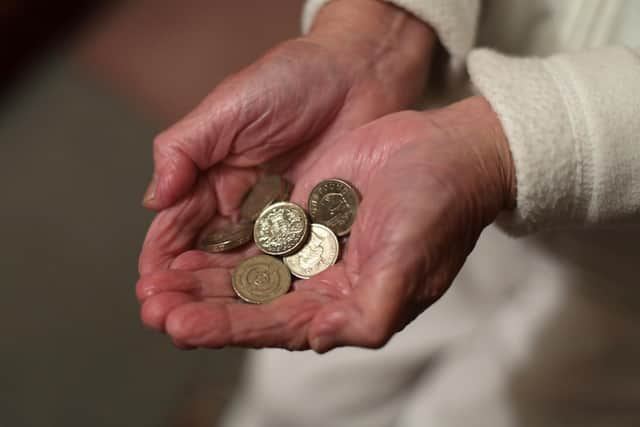Economic pain is only going to get worse for consumers - Sarah Coles
The battered wrecks being feverishly rowed by people on lower incomes have taken on three times as much water as the yachts that the moneyed multi-millionaires are relaxing on. However, by this stage in the crisis, even those in mid-range dinghies are starting to list a little.
Every six months we work with Oxford Economics on the HL Savings and Resilience Barometer. It’s a massive piece of work, that draws on 17 different data streams, to put together a holistic picture of all our finances – from how much money we have at the end of the month, to how much our debts are costing us and how much we’ve saved for retirement.
Advertisement
Hide AdAdvertisement
Hide AdIt then drops this model into the real world, and taking everything we know about what’s coming down the track, it models where we’re going to be in the next 12 months.


I’m not going to sugar-coat this: things are looking pretty awful already, and they’re going to get worse.
Soaring prices over the past three months mean the real value of our incomes (after inflation) has dropped by 3%. It means two in five of us have been forced to dip into savings, borrow money or cut our outgoings to make ends meet. Meanwhile, pension savings are failing to keep up with the amount of money we’ll need in retirement to cover rising prices.
On average, over the next 12 months, even when you factor in the lump sums the Government is planning to pay people, the cost-of-living crisis will wipe out any extra resilience we built during the pandemic. Some will borrow more, others will eat into savings, and some will save and invest less. There’s also the risk we fall further behind on pension saving.
Advertisement
Hide AdAdvertisement
Hide AdWhat this actually means for you depends to a large degree on your income and current position. For the highest three fifths of earners, it will tend to mean they’ll save less, whereas the lowest two fifths will have to eat into any savings, or borrow more – and the bottom fifth will see all their lockdown savings wiped out.
Unfortunately, lower earners are less likely to have savings in the first place – and are less likely to have saved anything during the lockdowns – so they’re more likely to have to borrow to cover their outgoings. As a result, the next 12 months will see the gulf between higher and lower earners widen.
To make matters even worse, they’re going to be hit the hardest too: their resilience will fall three times further than those on higher incomes. This owes an awful lot to the fact that such a large proportion of their income is needed to cover the cost of the essentials. The price of energy, food and in some cases rent, are soaring. And while a higher earner may be able to cut out luxuries to stay within their budget, there’s far less that lower earners can do about the cost of these essentials.
It’s one reason why the Office for National Statistics says 43% of people are buying less food, and supermarket bosses have reported that people are asking cashiers to stop ringing up their shopping when they reach their limit – leaving vital staples behind.
Advertisement
Hide AdAdvertisement
Hide AdIf you’re facing these kinds of horrible choices, it’s essential to get any help you can, sooner rather than later. Debt charities like StepChange and benefits experts like Citizens Advice can help ensure you apply for everything you can possibly get, and understand all your options when it comes to managing your debts.
Life is easier for those in higher incomes, but they’ll face their challenges too. As interest rates rise, it’s going to be harder to cover the cost of borrowing, especially for those with big mortgages who see their fixed rate deals expire.
This will hit those on higher incomes particularly hard because they tend to borrow more. It means it’s worth this group addressing their borrowing: paying back expensive debts and considering whether it makes sense to move longer-term borrowing onto fixed rates.
For those in the middle, some groups will face particular challenges. People living alone carry an enormous burden, covering the cost of the rent or mortgage – plus bills – on their own. It means that even those on mid-range incomes may well start to suffer. They’ll see their monthly budget hit harder than any other type of family.
Advertisement
Hide AdAdvertisement
Hide AdIn Yorkshire and Humber, one major problem is that far fewer people will have any wriggle room in their budgets. Fewer people in the region have enough ‘surplus income’ than anywhere else in the country, so they’ll face having to make cuts far sooner.
Even those who have considered themselves relatively comfortable in the past will need to work out how they’re going to manage as their costs rise. It’s not just a case of cutting your costs to make ends meet. As the barometer shows, the real challenge will be finding a way to cut them enough so you can afford to keep building your financial resilience for retirement too.
